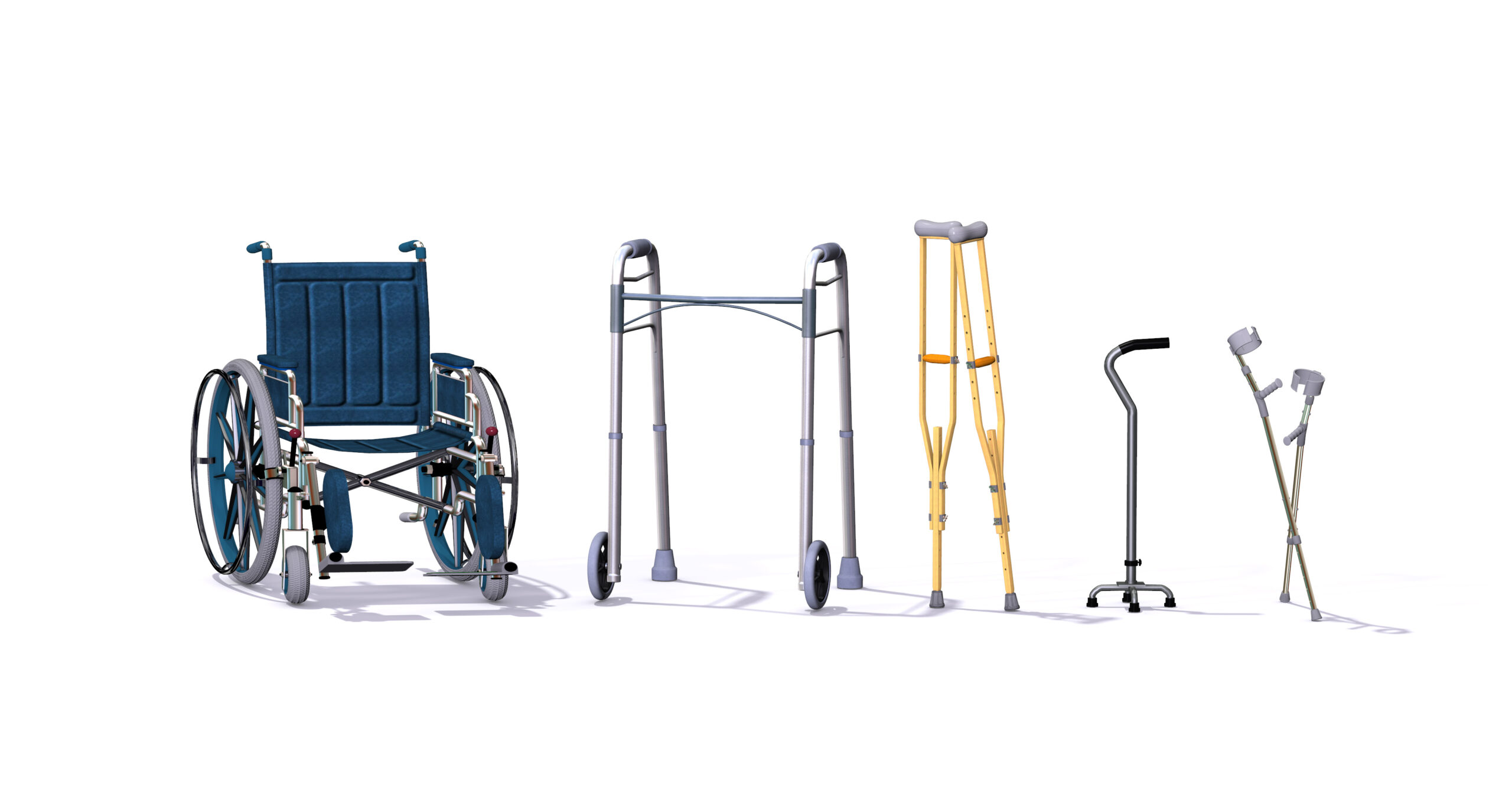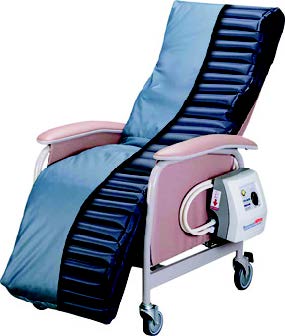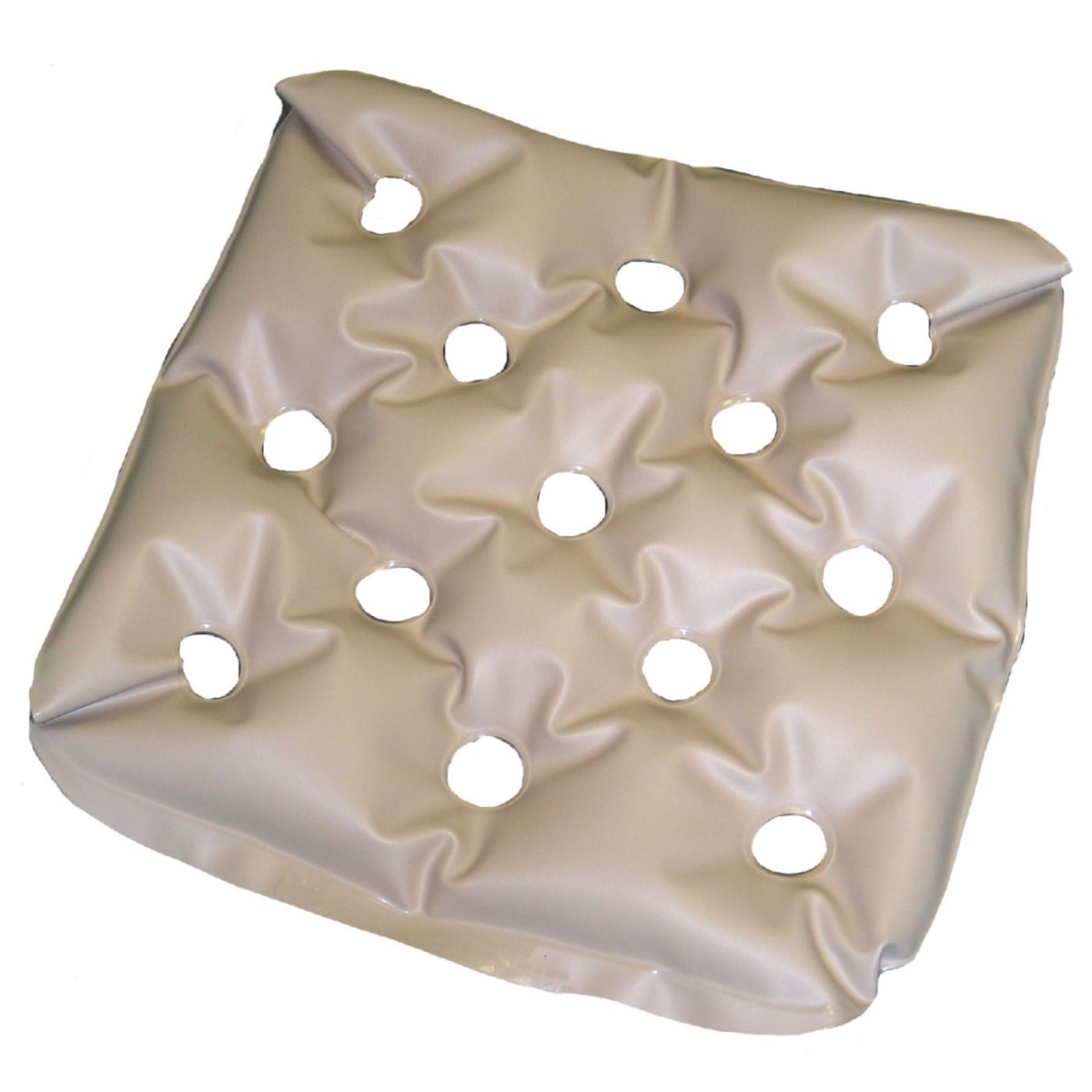True /False: Patients who leave the floor for procedures are at higher risk for developing a pressure injury (OR procedures, IR procedures, cath lab, GI Procedures)
True

This device helps offload patients laterally while in bed
foam wedge

You want to take your patient on a walk, what is an important question you should ask first?
"Do you use a walker or cane?"

This chair cushion must be obtained from the rehab department
Roho

This pressure injury risk assessment scale measures physical and mental condition, nutrition, activity, mobility, and incontinence
The Braden scale
This is an evidence-based tool that is most used to assess the risk for pressure injuries. This scale includes components such as sensory perception, moisture, activity, mobility, nutrition, and friction/shear, helping to determine the patient's overall risk for developing pressure injuries.
True/false: There is a risk of device-related pressure injuries with external male and female catheters
True
External male and female catheters, such as the PureWick, have potential to cause pressure injuries. It is important to ensure proper fit and hygiene, as improper use or prolonged wear can result in skin irritation or pressure damage
This is the maximum amount of time a patient should be in the chair without repositioning
One hour
This specialty cushion is ordered by UCO from Agiliti for patients with >stage 2 wounds
low air loss overlay

True/false: It is not necessary to reposition a patient with blanchable erythema
False
Repositing patients is key to pressure injury prevention. Blanchable erythema is redness that turns white when pressed and turns red again when pressure is released. However, you would still want to note subtle change & implement early pressure injury interventions to prevent NON blanchable erythema
True/false: My patient has an orthopedic brace (C-collar, knee immobilizer, wrist splint), I should not remove it for skin checks
False

Name 3 places a pressure injury can develop in the chair
sacrum, ischial tuberosities, spinous processes, heels, elbows, lateral malleolus

This item found in the supply room is a minimum requirement for every patient with a Braden Score <18 or for patients who can’t independently reposition in the chair
Standard air cushion

Name 3 risk factors for developing periop pressure injuries
- being anesthetized
- prolonged immobility
- being unable to verbalize pain/discomfort related to positioning
This device is not compatible with pneumoboots
Multipodus boot

Name 3 options for repositioning once in the chair
- putting leg rest down
- standing for 1 minute
- shifting laterally
- lifting patient in the highback sling for 1 minute
True/false: When a patient is on a specialty bed we do not have to turn them every 2 hours.
False
A specialty bed provides pressure redistribution but does not provide pressure relief. You still need to reposition patients